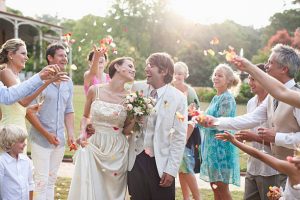The 28mm focal length fixed when you purchase Leica Q. The fixed 28mm focal length you get with Leica Q can be versatile and imaginative, but it can also produce basic images like these to set the scene. Photo taken by Carey Rose, processed to taste using Raw.
Between the timber industry and the reputation for racketeering and organized crime, the early Portland, OR, is a town that, like many other Pacific Northwest settlements, started with a rough start. Today, Portland has grown into and is recognized as a highly modern city in the United States. The rise from poverty to prominence is reminiscent of the growth of technology that uses mirrors in cameras, but the latter is happening significantly faster. These once slow as well as poorly focused and extremely power-hungry devices have now become technologically powerful devices that play the host to some of today’s most innovative and cutting-edge developments technological advancements in cameras. For instance, the Leica Q is, unarguably one of these mirrorless cameras.
Portland has also been dubbed “Bridgetown” because of its numerous bridges that cross across cities. In a way, Leica Q is a bridge that I can call my own. It’s the first camera I’ve taken to photograph a wedding along with my standard full-frame DSLRs and is the first camera I’ve owned that has performed close to the level I’m used to from my worn-out and heavy-duty working cameras.
Be aware that Leica Q is the primary camera used for this wedding. Leica Q was used together with two additional cameras during the marriage, however, all photos in this post were taken with the Q. Its 28mm lens is versatile, but certainly has a specific look, but it’s not a substitute for an excellent standard or telephoto lens to give you a variety in the final image.
Fitting in the kit
I typically shoot a wedding with two full-frame DSLRs and then switch between 35mm lenses, 50mm and 85mm (with the 80-200mm F2.8 available just for the ceremony). Incorporating Leica Q to my collection Leica Q to the mix was more bulky certain, but I was carrying three cameras instead of just two. However, it also meant there was virtually no possibility of swapping lenses as I could use the 35mm focal length covered mainly by the Q’s 28mm F1.7 Summilux lens. It also allowed me to ensure that the other 85mm and 50mm lenses were lenses glued to the cameras. This meant that I looked somewhat ridiculous to the majority of the guests; however being able to have three F1.7-and-wider lenses in my arsenal let me take advantage of whatever circumstance I was in.
The Q was able to get the attention of the subject’s head despite dim backlighting and rather low contrast. What is the reason why all CDAF systems perform this way? Photo taken by Carey Rose, processed to taste using Raw.
What did you like, and what didn’t?
The Q’s autofocus system isn’t only precise and close to detecting phase quickly (even though it’s a contrast detection system). I used single-AF mode because it performed flawlessly. The four-way controller at the rear of the camera made it easy to change the location of the focus point swiftly, and due to the focal length of 28mm, the focus-and-recompose shot did not make much of any difference in the critical sharpness. When I did want to utilize Face Detection (such as handing the camera to someone else to shoot), I discovered it challenging to navigate through the menus to modify the focus point. This might be alleviated by assigning an autofocus feature to one of the function buttons that you can customize on the rear of the camera, but you won’t be able to. The menus, however, are well-organized.
While its DNG files may not have as much processing power as other cameras, it can perform well in low-light conditions, provided you pay attention to the quality of your exposure. F1.7 | 1/125 | ISO 5000
In terms of buttons, The dials, switches, and controls are all easily accessed by focusing your eyes on the locater and with enough positive force that there’s no doubt about whether or not you’ve hit something.
The outcomes
Despite the minor problems I have mentioned above and beyond, it’s still an excellent camera. Leica Q is a fantastic camera. I had these minor issues initially that I didn’t give it any room to maneuver. I utilized it exactly like an existing Full-frame DSLR system and expected it to function as one. In the majority of cases it did. In fact, if Leica released a new Q with an 85mm or 50mm fixed lens I’d have a tough to resist selling most of my DSLR equipment and converting to. I wish the cameras on my DSLRs are worth the price of gold. Maybe tiny red dots.



